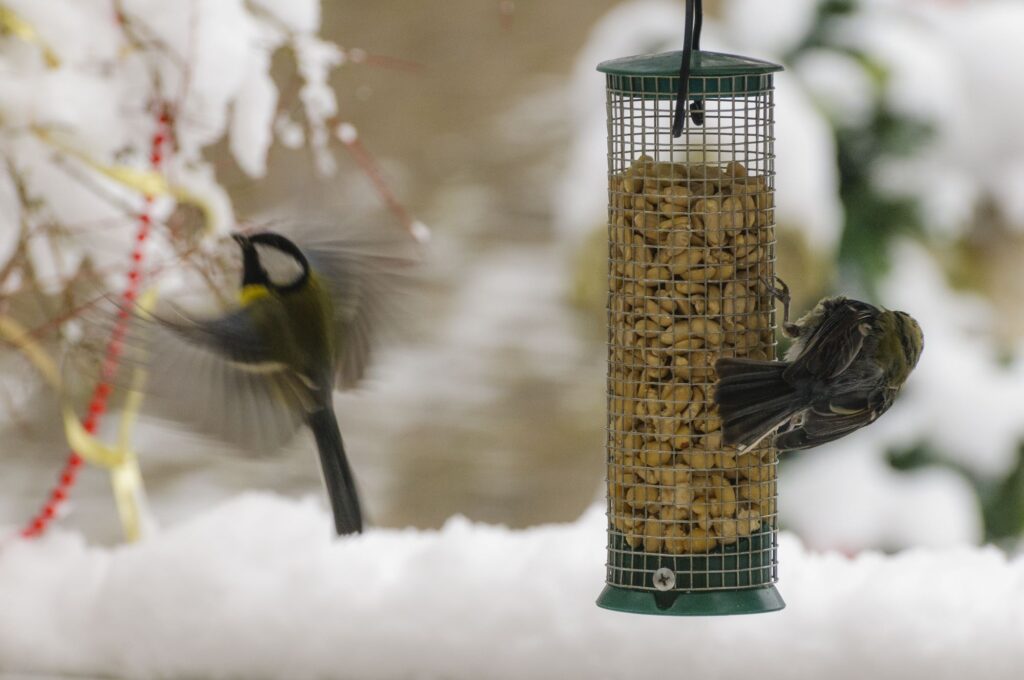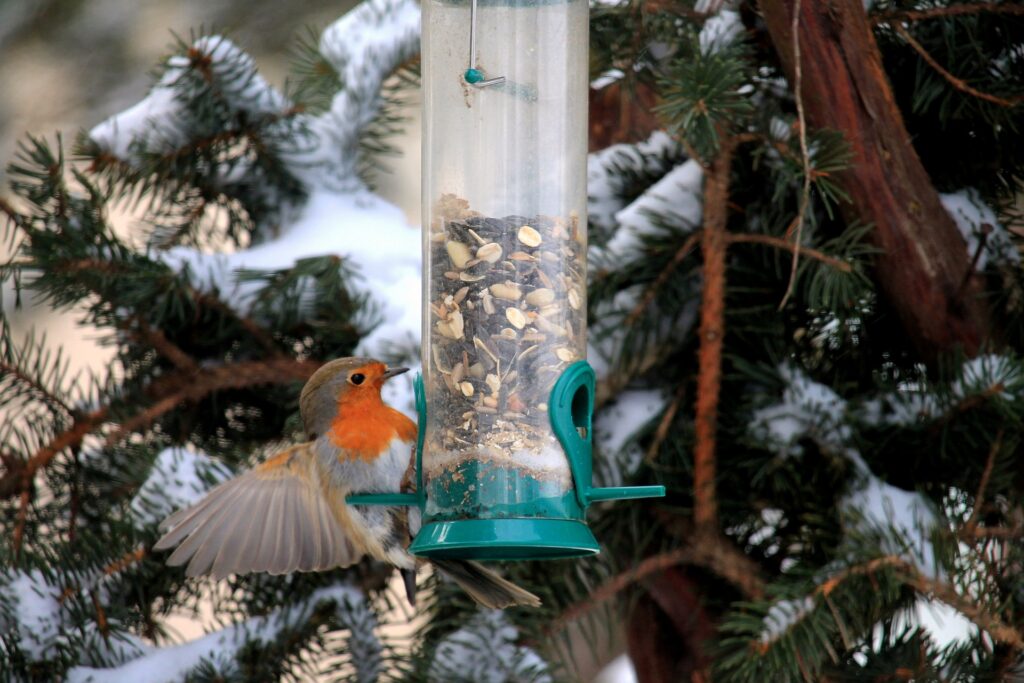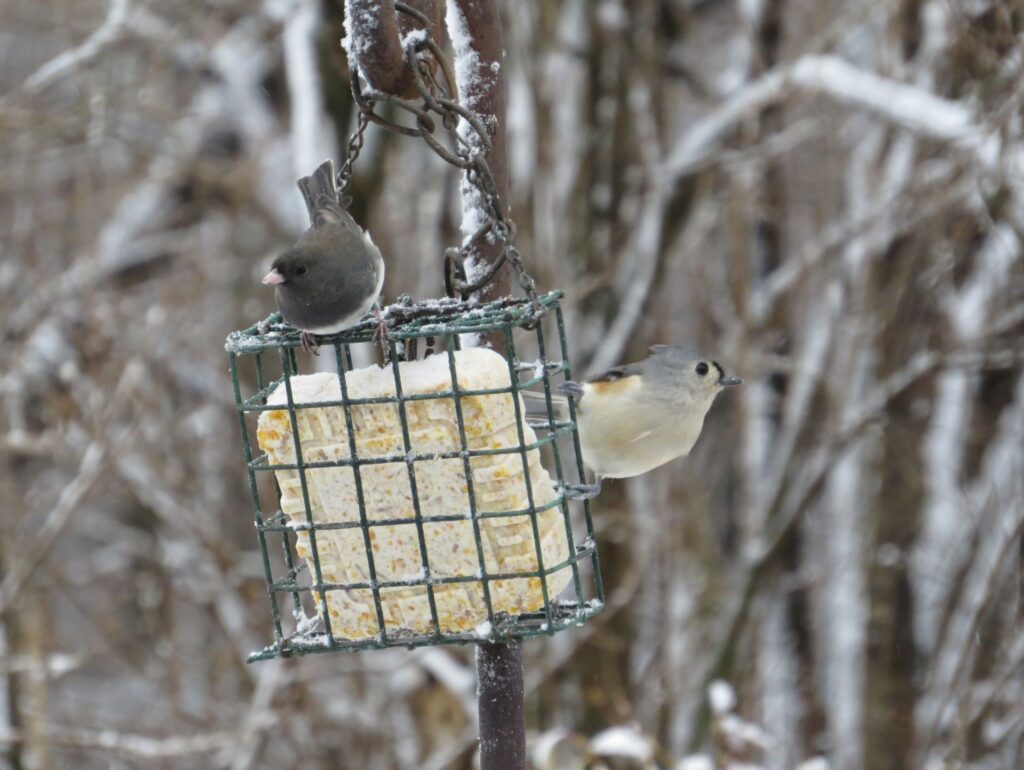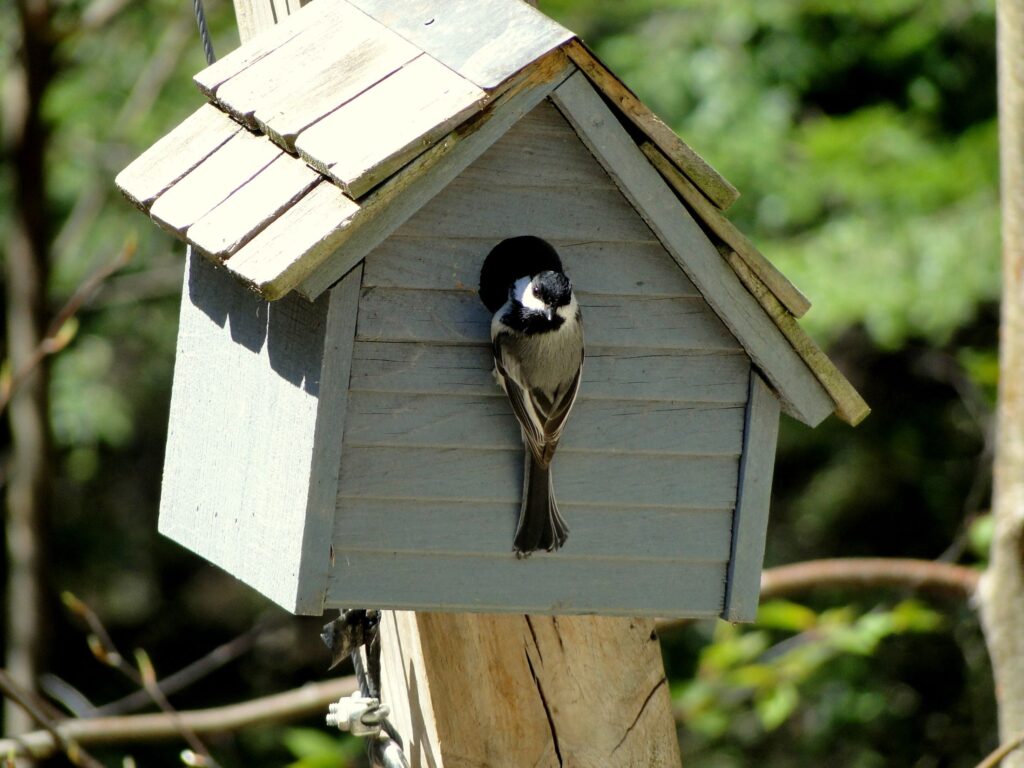Has your bird feeder all of a sudden become a hotbed of activity? Are you seeing colorful new varieties of birds in your yard? Is your garden full of the flurry of wild birds? If you’re noticing that your backyard birds are more active this time of year than usual, you’re not imagining things. Here’s why February is a prime time to go backyard birding—and how you can help support your local feathered friends.
February: A Busy Month for Wild Birds

February is National Bird Feeding Month, and it’s easy to see why. Wild birds that have survived the winter are still scrounging for food wherever they can get it. Natural food sources have long dried up, and they’re finding themselves competing with other birds for their supper. Plus, it’s almost time to find a mate. Though a bit early in the season, some birds start in February with expressive courtship displays designed to attract the right one.
Enjoy More—and More Varieties of—Birds at Your Feeders

The good news is that February is also a time to see many more—and new varieties of—birds in your backyard. To meet the high demand of high-quality bird food, you may also consider hanging another bird feeder, or putting out a new variety of bird food—or both! For instance, suet is a popular winter bird food because it’s high in fat and protein—both excellent energy sources for birds who feel depleted at this time of year. Black-oil sunflower seeds are also a good choice—and can be found in Chirp’s propriety Big Bear Blend, a seed mix made special for our local birds. Peanuts and mealworms are other good choices—the more types of foods you offer, the more kinds of birds you’ll attract (and help).
How to Help Backyard Birds in February
Remember: February may be the tail-end of winter, but it’s still a cold, hard time for wild birds in many places. Here’s how to help them get through the last of winter and on into springtime.
Add more bird feeders
More bird feeders mean more, and much-needed, food sources for wild birds. Hang your additional feeders near a sheltered place where they can eat without fear of weather or predators, like in a tree branch, near a bush or shrub, or close to your eaves. Place feeders a fair distance away from each other so birds won’t have to compete.
Try different types of feeders

If you already have a tube feeder, why not switch it up and add a suet feeder—or even a double suet feeder? Adding new types of bird feeders to your yard is an excellent way of attracting new bird species.
Offer a heated water source
Do birds need water in winter? The simple answer is, yes, they do! In fact, they need water year-round, so providing a water source—like a pond, fountain, or birdbath—is helpful. And during the winter, a heated birdbath keeps the water birds need for bathing and drinking at a tepid temperature perfect for both.
Keep your feeders clean
Prevent the spread of bird diseases by keeping your bird feeders clean. This includes switching out wet bird seed that could become moldy or spoiled. It also includes cleaning under your feeders, so as not attract pests with fallen seed. For more details on how, and how frequently, to clean your bird feeders, see our post, “Cleaning Your Bird Feeder Dos and Don’ts.”
Mount a bird house or roost box

Provide shelter from the cold by mounting a bird house or roost box in your yard. These places are also the perfect residences for nesting birds looking for a safe spot to lay eggs and raise their young.
Don’t clean up your yard just yet
Wintering birds are still looking for natural shelters—and that brush pile in the corner of your yard is prime real estate! Hold off on spring cleaning your yard for just a little while longer, and your local birds will be grateful.
How to Celebrate National Bird Feeding Month

- Feed the birds your backyard. Follow the advice in this post, and then sit back and enjoy backyard birdwatching from the comfort of your couch, yard, or kitchen window.
- Participate in the Great Backyard Bird Count. Every year in February, the National Audubon Society hosts the Great Backyard Bird Count (GBBC). This is a free event for all ages. Participants are asked to simply count the birds they see (in their yard or elsewhere) every day for four days, and report their sightings at birdcount.org. This year, the GBBC runs from February 17-20.
- Join Project FeederWatch. The Cornell Lab’s Project FeederWatch is a program where you can count and track the birds you see at your feeders, and in the wild, on their online database. The program runs from November to April, and the fee is $18. The data gathered through this program helps scientists track and analyze bird behaviors and population fluctuations.
- Go on a Chirp bird walk. We offer monthly guided bird walks to local birding hotspots. Come and join likeminded bird and nature lovers for a day of nature walking and birdwatching. Check out our Activities page for the next one.
Help Us Help the Birds

Did you know that with every Chirp purchase, you’re giving back to the birds? We donate a portion of each sale to local and national nature advocacy organizations. Plus, our products are locally and responsibly sourced, and sustainable. It’s all part of our goal here at Chirp: to connect people to nature, and each other.


